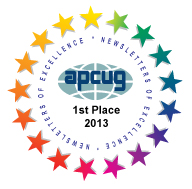From a PowerPoint presented at the Windows 7 SIG on September 11, 2010.
What is ReadyBoost?
- ReadyBoost can speed up your computer by using storage space on most USB Flash Drives and Flash Memory Cards.
- The PC can get to data in RAM (memory) hundreds of times faster than it can fetch it from the hard disk.
- That’s why your PC uses a cache, defined as a portion of memory that holds bits of software code you’ve used recently.
- The more memory your machine has, the more that’s available for the cache, the faster things should feel to you.
Does ReadyBoost Really Work?
In theory, Yes, but not for every setup.
The Technical Part
- An average 4K read from a flash device is about 10 times faster than reading from a 7200 RPM hard disk.
- Thumb drives can be read very quickly (USB 3.0 thumb drives will even be faster).
- Speed is because there is little to no seek time to read a thumb drive.
- Hard drive seek time depends on how contiguous the data is and the amount of data being read.
- All flash drives are not made equal.
Flash Drive Requirements
To work with ReadyBoost, the flash drive must be capable of:
- 2.5 MB/sec throughput for 4K random reads and
- 1.75 MB/sec for random writes
Will My Flash Drive Work?
- Plug the flash drive in a 2.0 USB slot.
- Did Windows offer the use of ReadyBoost in the dialog that pops up when you plugged the drive in? (Do you want to speed up your PC?)
- If you get the offer, the flash drive or memory card is compatible and you're good to go.
Requirements for Using ReadyBoost
- A PC
- free USB 2.0 Port
- Windows Vista or Windows 7
- A Flash Drive
-
capable of 2.5MB/sec throughput for 4K random reads and 1.75 MB/sec for random writes
- Between 250MB and 4GB in size (Vista 32-bit)
- Between 250MB and 16GB in size (Vista 64-bit)
- Between 250MB and 4GB in size (Windows 7 32-bit)
- Between 250MB and 32GB in size and up to eight devices for a total of 256GB (Windows 7 64-bit
-
Enabling & Configuring ReadyBoost
Insert a USB flash device into a USB 2.0 or higher port.
- The AutoPlay dialog box should be displayed automatically (unless you’ve changed the defaults in Control Panel).
- Click “Speed Up My System using ReadyBoost.”
- The device’s Properties dialog box opens to the ReadyBoost Tab.
Do one of the following:
- If you want the device to automatically reserve the maximum amount of space for ReadyBoost, select “Dedicate this device to ReadyBoost”, then click OK.
- If you want to use less space than the maximum possible, select “Use this Device” and then use the “Space to Reserve For System Speed" Slider or the combo box to set the amount of space to use for ReadyBoost, then click OK.
NOTE 1: If Windows decides that your drive is fast enough without ReadyBoost, it disables ReadyBoost entirely.
NOTE 2: You can use 1 flash drive per PC, and one PC per flash drive.
Security risks using ReadyBoost
- Pretty small
- Microsoft uses AES-128 to encrypt all data written to the ReadyBoost cache.
Alternatives to ReadyBoost
- Use a Solid State Drive (SSD) for your operating system drive. $$$$$
- Add additional memory (RAM) to your computer. $$
ReadyBoost Tips from Microsoft
- The minimum amount of available space recommended for ReadyBoost to effectively speed up your computer is 1GB.
- For best results, use a flash drive or flash memory card with available space of at least double the amount of memory (RAM) in your computer, and preferably four times as much memory.
- For example, if your computer has 1 GB of RAM and you plug in a 4 GB USB flash drive, set aside at least 2 GB on the flash drive to get the best performance gain from ReadyBoost, and preferably the entire 4 GB. How much memory you need depends on how you use your computer. Keeping a lot of programs open at once uses more memory.
-
Give ReadyBoost 2 GB to 4 GB of space for best results on most computers. You can reserve more than 4 GB of space for ReadyBoost on most flash drives and flash memory cards. (Storage devices formatted with the older FAT32 file system can’t store more than 4 GB.) You can use a maximum of 32 GB of available space on any single removable storage device with ReadyBoost and up to 256 GB total per computer (by inserting up to eight USB flash drives or flash memory cards into the same computer).
- To work with ReadyBoost, a USB flash drive must support USB 2.0 or higher. Your computer must have at least one free USB 2.0 port where you can plug in the flash drive.
- ReadyBoost works best if you plug the flash drive into a USB port directly on the computer, rather than into an external USB hub shared with other USB devices.
- If you want to be sure a USB flash drive works with ReadyBoost, look for a note from the manufacturer that the flash drive is “Enhanced for ReadyBoost.” Not all manufacturers list this on their packaging.
- If there is no mention of ReadyBoost compatibility, the flash drive still may work with ReadyBoost.
- There are many different kinds of flash memory cards, such as CompactFlash and Secure Digital (SD) memory cards. Most memory cards work with ReadyBoost. Some SD memory cards don’t work well with ReadyBoost due to issues with the SD card interface. ReadyBoost will display an error message if you attempt to use one of these cards.




